News from the Art World


November 4, 2020
The European Fine Art Fair usaully holds its big exhibition at the Park Avenue Armory in the summer. This year there was a spanner in the works, as we all know. Last week they did the whole show virtually. This gorgeous Vilhelm Hammershoi, “Interior with a Woman Standing” found a home at $5M.
I’m glad to see people investing their fiat currency in fine art, a most enjoyable tangible asset.
Here’s a link for you, Michael Palin and the Mystery of Hammershoi . This is a BBC documentary you might like if Danish tonal painting (or English comedians) are of interest.
Read More at Art News
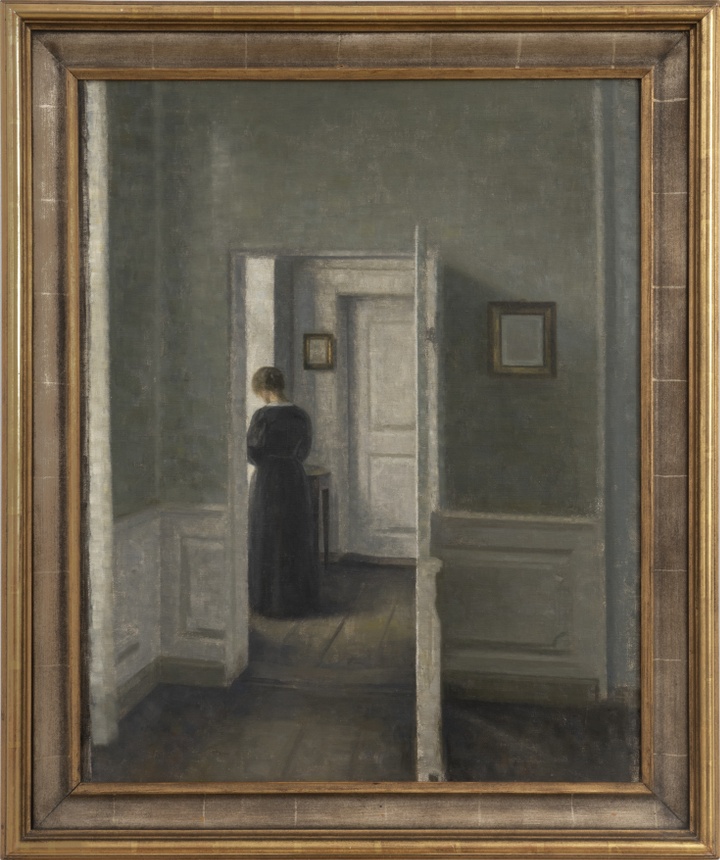
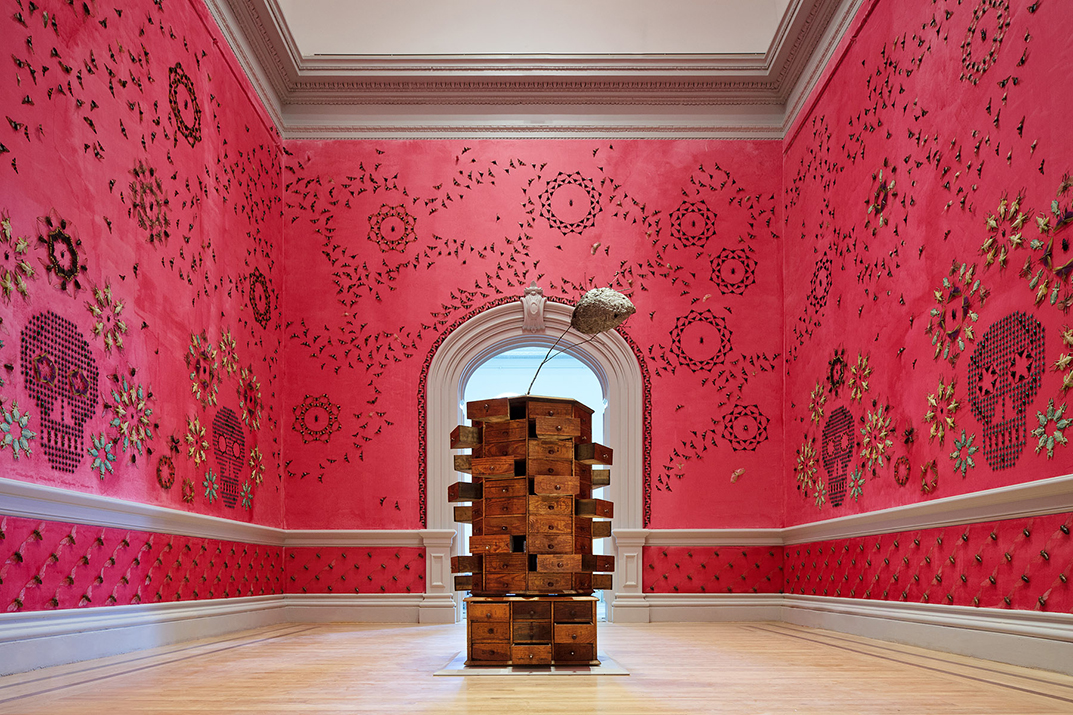
Jennifer Angus is one of nine contemporary artists featured in the exhibition “Wonder,” on view November 13, 2015 through July 10, 2016, at the Renwick Gallery of the Smithsonian American Art Museum in Washington, D.C.
Pretty Bugs
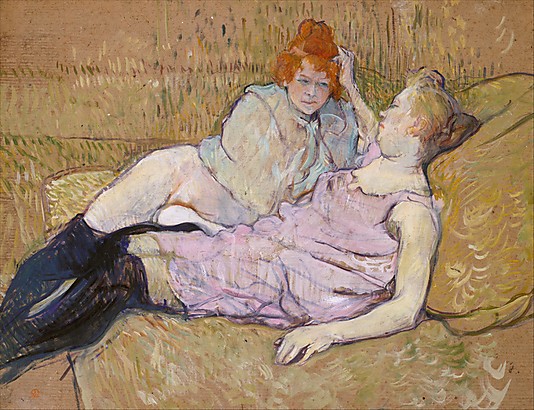
Sex Sells – especially in museums
How does one cover expenses when the grant purses are closing? Prostitution, of course!
The Musee D’Orsay: “The first major show on the subject of prostitution, this exhibition attempts to retrace the way French and foreign artists, fascinated by the people and places involved in prostitution, have constantly sought to find new pictorial resources for depicting the realities and fantasies it implied.
From Manet’s Olympia to Degas’s Absinthe, from Toulouse-Lautrec and Munch’s forays into brothels to the bold figures of Vlaminck, Van Dongen or Picasso, the exhibition focuses on showing the central place held by this shady world in the development of modern painting. The topic is also covered with regard to its social and cultural dimensions through Salon painting, sculpture, decorative arts décoratifs and photography. A wealth of documentary material recalls the ambivalent status of prostitutes, from the splendour of the demi-mondaine to the misery of the pierreuse (street walker).
Please note that some of the pieces presented in the exhibition may be shocking to some visitors (particularly children).”
Read more...
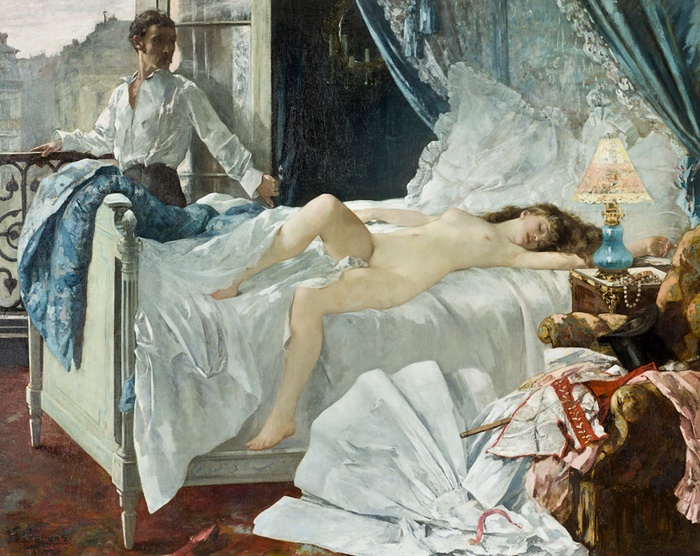 “Everyone knows that cultural budgets are being constantly nibbled away,” writes Philippe Dagen, according to the Independent, “but is it really necessary to solicit visitors by showing naked women in lascivious poses and naked men exhibiting their genitals?”
“Everyone knows that cultural budgets are being constantly nibbled away,” writes Philippe Dagen, according to the Independent, “but is it really necessary to solicit visitors by showing naked women in lascivious poses and naked men exhibiting their genitals?”If you miss the exhibition in Paris, next stop is the Van Gogh Museum. Amsterdam has always understood the value of vice.
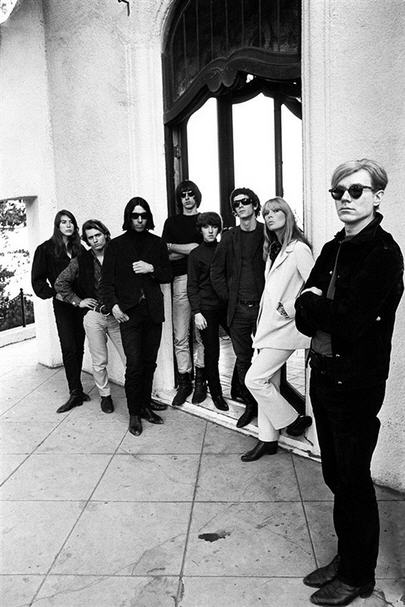
Andy Warhol Lifted Weights
“…After talking to many survivors of Warhol’s circle in New York, including his relatives as well as an associate who was close to the artist for many years but has never spoken at length before, I discovered a very different version of the man,
a long way from the dead-eyed Martian of legend. And I came away with a renewed respect for his uncanny prescience in anticipating our fascination with brands, celebrity, even selfies. Warhol was the painter of modern life.”
BBC documentary, A Day in the Life of Andy Warhol, presented by Stephen Smith, is on BBC4 on 25 August as part of the series BBC4 Goes Pop.
Steve Shapiro, Andy Warhol and the Velvet Underground, Los Angeles, California, 1966. Courtesy of the A. Gallery, Paris and the Centre Pompidou-Metz.

Digital Scans and Archeology
August 11, 2015 – Does the tomb of Tutankhamun hold a secret passageway to the burial chamber of Queen Nefertiti? One researcher believes he has found evidence of a sealed-off door that he believes led to the famously-beautiful Egyptian ruler’s tomb.
Nicholas Reeves of the University of Arizona has published a paper, “The Burial of Nefertiti?” based on his belief that high-resolution scans of the tomb (taken to create a life-size copy of the space) show traces of two walled-over doorways beneath the painted walls. He speculates that the “ghost” doorways would have led to a storage chamber and to “the undisturbed burial of the tomb’s original owner—Nefertiti.”
read more
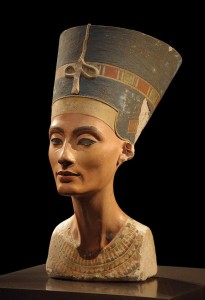
Nefertiti – Neues Museum – WikiCommons
Egyptologists are divided as to the parentage of King Tut, but one theory holds that Nefertiti, chief wife of Tut’s father, the Pharaoh Akhenaten, gave birth to the boy-king. (A recent autopsy indicates that Tutankhamun was crippled, possibly because he was the product of incest.)
Since the famed 1922 discovery of King Tut’s tomb by Howard Carter, archaeologists have wondered at the burial chamber’s relatively small size. Reeves’s theory offers a neat explanation to this lingering question: King Tut’s tomb was a mere antechamber added onto Nefertiti’s larger burial chamber.
The hidden tomb, if it exists, would be to the right of the entrance shaft, as was traditional for Egyptian queens. The former doorway is now decorated with religious scenes, which Reeves speculates would have been part of a ritual protection for Nefertiti’s final resting place.
Reeves also contends that King Tut’s richly adorned tomb is actually full of secondhand objects (possibly even his famed, recently-damaged funerary mask), some of which seem to indicate that Nefertiti served as the boy’s co-regent. Nefertiti’s known titles do suggest she helped rule the country following Akhenaten’s death, possibly as co-regent or even as pharaoh in her own right.
“If digital appearance translates into physical reality, it seems we are now faced not merely with the prospect of a new, Tutankhamun-era store room to the west [but] that of Nefertiti herself, celebrated consort, co-regent, and eventual successor of Pharaoh Akhenaten,” wrote Reeves.
“I would be very surprised if this tomb was built to house the original, or first, burial of Nefertiti,” countered Joyce Tyldesley, a senior lecturer in Egyptology at the University of Manchester, to the Times. “It seems to me that it is highly likely that she died during her husband’s reign…but I would have expected her to be buried somewhere in the Western Valley, rather than in the center of the Valley of the Kings.”
Luckily, it is fairly easy to begin to check Reeves’s theory using non-invasive means. Radar scans should reveal whether or not there are any hollow chambers adjacent to King Tut’s tomb. If so, a team of experts would likely be brought in to conduct a careful excavation.
“Each piece of evidence on its own is not conclusive, but put it all together and it’s hard to avoid my conclusion,” Reeves insisted to the Economist. “If I’m wrong I’m wrong, but if I’m right this is potentially the biggest archaeological discovery ever made.”
Artnet
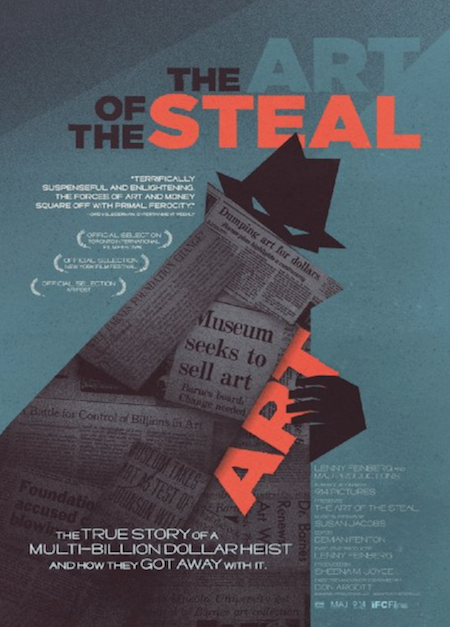
Ten Documentaries Recommended by Artnet
July 29, 2015 –
1. Jean-Michel Basquiat: The Radiant Child (2010)
A fantastic documentary that explores the life and art of Jean-Michel Basquiat. Directed by the artist’s close friend Tamra Davis, this movie features rare footage and interviews with Basquiat’s contemporaries of 1980s downtown New York.
2. The Art of the Steal (2009)
The documentary tells the story of the struggle for control of the Barnes Foundation, one of the world’s best collections of modern and impressionist art, valued at an estimated $25 billion. Politicians controversially moved the collection from Merion, Pennsylvania to downtown Philadelphia, contravening the will and testament of its founder, Albert C. Barnes. (Personal aside: I enjoyed the new Barnes more than the old. No parking hassle. No time limits. Still a great collection exhibited with flare – now in a …different… but wonderful building -Nancy. Oh, and I have this DVD. Stop by the gallery and we’ll watch it.)
read more
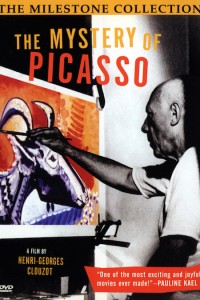 3. Le mystère Picasso (1956) This sensational film documents Pablo Picasso‘s creative process. Using specially designed transparent canvas, the camera traces the master’s every move, giving viewers insight into the painting technique of one of the most renowned artists of the 20th century.
3. Le mystère Picasso (1956) This sensational film documents Pablo Picasso‘s creative process. Using specially designed transparent canvas, the camera traces the master’s every move, giving viewers insight into the painting technique of one of the most renowned artists of the 20th century.4. Eames: The Architect & The Painter (2011) Architect and designer Charles Eames and his wife Ray, an artist, were two of America’s most influential tastemakers. The couple made hugely significant contributions to modern architecture, furniture and art. Using archival material and new interviews with friends, collaborators, and experts, this superb film tells their story.
5. The Cool School (2008) Narrated by Jeff bridges, the film examines the rise of the Los Angeles art scene which developed as a counterculture rebelling against the Abstract Expressionist art movement championed in New York. It profiles the influential Ferus Gallery and its owners Walter Hopps and Irving Blum and tells the story of how a small group of artists such as Ed Kienholz, Larry Bell, Ed Ruscha, John Altoon, and Billy Al Bengston transformed American art.
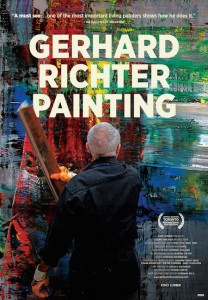 6. Gerhard Richter: Painting (2012) Providing a behind-the-scenes view of the studio of one of the world’s best (-selling) living painters, this film documents Gerhard Richter‘s creative process, showing the artist at work. A series of interviews with Richter, as well as some of his critics and contemporaries adds context to the artist’s oeuvre.
6. Gerhard Richter: Painting (2012) Providing a behind-the-scenes view of the studio of one of the world’s best (-selling) living painters, this film documents Gerhard Richter‘s creative process, showing the artist at work. A series of interviews with Richter, as well as some of his critics and contemporaries adds context to the artist’s oeuvre.
7. Tim’s Vermeer (2014) American inventor Tim Jenison analyzes the revolutionary painting technique of the 17th century Dutch master Johannes Vermeer. Jenison sets out to find out how the painter was able to create photo-realistic works over a century before the invention of the camera. (Another personal aside: Evidently Penn and Teller, the producers, and Tim Jenison don’t believe David Hockney )
8. Marina Abramovic: The Artist Is Present (2012) The documentary follows the renowned performance artist Marina Abramovic as she prepares for her retrospective exhibition at the Museum of Modern Art, New York. The film explores how the Serbian national redefined the understanding of what art is.
9. Guest of Cindy Sherman (2008) Filmmaker Paul Hasegawa-Overacker, known for his Gallery Beat reviews of New York art shows in the 1990s, was invited to interview the reclusive photographer Cindy Sherman in her studio. After several interviews the filmmaker and the photographer fall in love and embark on a romantic relationship. This film offers viewers remarkably intimate, one-of-a-kind insight into the life of a notoriously camera-shy artist from the perspective of Hasegawa-Overacker, who struggles to come to terms with Sherman’s celebrity.
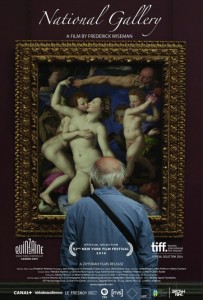 10. National Gallery (2014) A fly-on-the-wall account of the National Gallery, London, one of the world’s most renowned museums with a stunning collection of canvasses by Da Vinci, Rembrandt, Turner and others. Filmmaker Frederick Wiseman explores the inner workings of modern cultural institutions, documenting the National Gallery’s administrative meetings, conservation, restoration and educational functions.
10. National Gallery (2014) A fly-on-the-wall account of the National Gallery, London, one of the world’s most renowned museums with a stunning collection of canvasses by Da Vinci, Rembrandt, Turner and others. Filmmaker Frederick Wiseman explores the inner workings of modern cultural institutions, documenting the National Gallery’s administrative meetings, conservation, restoration and educational functions.
(Personal aside #3:
11. David Hockney: Secret Knowledge
(2003)Artist David Hockney discusses his theory that artists were secretly using optical devices such as mirrors and lenses in creating their work as early as the 15th century. Examples from Flemish and Italian art are studied as he examines how famous paintings have had their noted mysteries newly solved; he also makes comparisons to modern film and digital imagery.)
Artnet News
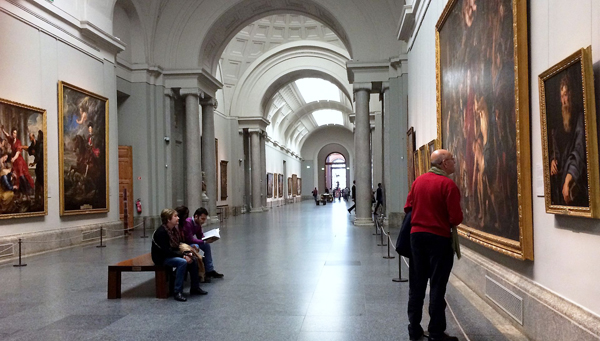
Who Pays Attention to Public Art?
2015 – Baden-Württemberg, Germany’s third largest federal state, negligence related to artworks procured with state funds. According to German daily Frankfurter Allgemeine, the audit showed that some 500 public artworks produced as part of the 1950s municipal program “Kunst am Bau” (the German equivalent of New York’s Percent for Art law) are unaccounted for, or missing.
Spain’s Museo del Prado has lost 885 artworks, according to El Pais. The newspaper, citing a report by Spain’s Audit Court, claims that the Madrid-based institution was missing 926 works at one point, 41 having been found between 2008 and 2012. Those works had been misplaced during a restructuring period of the country’s national collections held at the Prado and the Reina Sofia museum of contemporary art.
WPA artwork across the US is gone.
read more

Joan Miro – “Signes et Meteores” – missing
It is assumed that most missing works from the Prado were misplaced or destroyed many years ago – fires and wars were mentioned. Consequently, no one is expected to be held responsible. The number of missing artworks from the Prado’s collection has steadily increased from 350 in the 1980s and about 500 in the 1990s, a nice linear progression towards the around 900 now missing. 450 pieces destroyed by war and fire since the 1980’s?
The court claims that “the high number and dispersion” of works from the Prado collection to other museums and institutions is partially to blame for the continual leakage of artworks. As the museum told the paper, the volume of art loans “makes oversight particularly difficult.” In their report, the court cites, “Lack of sufficient human resources,” as the culprit behind the missing artworks.
The government body Vermögen und Bau Baden-Württemberg is responsible for the management of 3,500 works of public art across the state, which have been catalogued. Since 2005, all artworks and added acquisitions were recorded in a digital database. However, a recent audit of the database showed that 500 works can no longer be located.
Among the missing works are important modernist pieces such as the 1958 lithograph Signes et météores (from an edition of 100) by Joan Miró, procured in the early 1960s for the University of Stuttgart. According to research by the court of audit, the university administration was not aware of the loss, or even the date when the theft was first (not) noticed. Oops.
Artnet News
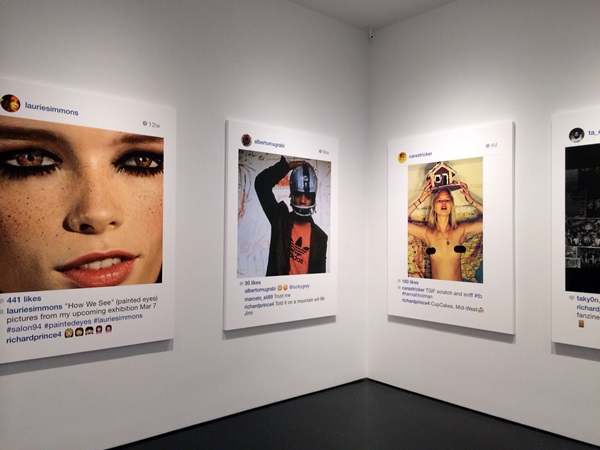
What is copyright infringement?
Is is okay for someone to copy your Instagram post, blow it up and sell it for $90,000?
May 28, 2015 – SuicideGirls, Los Angeles’ famous alternative pin-up models, are giving everyone’s favorite appropriation artist a taste of his own medicine. They’ve taken the image of a model that Richard Prince used from their Instagram account for his “New Portraits” series, and they reproduced his reproduction (see Richard Prince Steals More Instagram Photographs and Sells Them for $100,000; Who Are The Suicide Girls? Inside the Pin-Up Community That Trolled Richard Prince, and Paddy Johnson’s now famous artnet News review, Richard Prince Sucks). The best part? They’re asking for a mere $90 for an image of Ceres, rather than Prince’s going price at Frieze New York: $90,000.
read more
 The listing on their blog notes that the canvases are “sold by the actual people who created the image and profits go to charity,” as opposed to “profits [going] to a rich gallery owner and millionaire ‘artist.'” “While I understand the conversation that he’s trying to start, and that we’re all talking about copyright and art in the digital age, I feel like $90,000 is a crazy amount to spend,” Missy, the founder of SuicideGirls who conceived of the project, told artnet News over the phone. “He’s starting this conversation while utilizing people that are from our sort of scene—girls that are beautiful and unique. They could benefit from $90,000 dollars. None of them could afford that. So we wanted to create something that they could afford.” All proceeds from the sales of the prints—which, they are careful to note, are done via the same method as the ones offered at Frieze—will go to benefit the Electronic Frontier Foundation, a nonprofit organization that defends user privacy, free expression, and innovation in the digital sphere. Urban art publishers Eyes on Walls are supporting the project by fulfilling large canvas reproductions at a discounted rate. SuicideGirls shared a link to the project with Prince via Twitter, but the artist has yet to respond. While we’re chuckling at the fact that the reproducer has been reproduced, we can’t help but feel like Prince is getting exactly what he wants—copious amounts of attention. from Artnet News.
The listing on their blog notes that the canvases are “sold by the actual people who created the image and profits go to charity,” as opposed to “profits [going] to a rich gallery owner and millionaire ‘artist.'” “While I understand the conversation that he’s trying to start, and that we’re all talking about copyright and art in the digital age, I feel like $90,000 is a crazy amount to spend,” Missy, the founder of SuicideGirls who conceived of the project, told artnet News over the phone. “He’s starting this conversation while utilizing people that are from our sort of scene—girls that are beautiful and unique. They could benefit from $90,000 dollars. None of them could afford that. So we wanted to create something that they could afford.” All proceeds from the sales of the prints—which, they are careful to note, are done via the same method as the ones offered at Frieze—will go to benefit the Electronic Frontier Foundation, a nonprofit organization that defends user privacy, free expression, and innovation in the digital sphere. Urban art publishers Eyes on Walls are supporting the project by fulfilling large canvas reproductions at a discounted rate. SuicideGirls shared a link to the project with Prince via Twitter, but the artist has yet to respond. While we’re chuckling at the fact that the reproducer has been reproduced, we can’t help but feel like Prince is getting exactly what he wants—copious amounts of attention. from Artnet News.
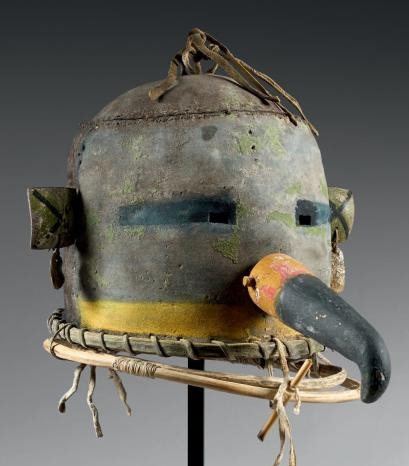
Sale of Sacred Hopi Artifacts
2014 – The Holocaust Art Restitution Project (HARP) and the Chairman of the Native American Hopi Tribe Council, Herman G. Honanie, have jointly announced that they will file a lawsuit in France in an attempt to stop the auction of a sacred Hopi “Kwaa Tsi” (mask), which is scheduled to take place at Paris’ Hotel Drouot on December 15. In an email to artnet News, a representative for HARP explained that “This is in part to remind all of us that this issue is bigger than the Holocaust and than Nazis and Jews. Plunder and restitution are broad subjects about which we feel morally obligated to be vigilant, and to lend our assistance when it is desired and when we can be helpful, regardless of the specific mode of pillage or spoliation.”
read more
HARP Chairman Ori Z. Soltes emphasized that “The Conseil des Ventes has the power to suspend this sale on two grounds. First, the presumption of good faith of the seller, which is the legal rule in France to challenge these sales, is eradicated by the numerous regulations and statutes which have been in effect in the U.S. for years. Furthermore, the Conseil must seek the provenance information for these objects from the seller. These objects cannot be sold or disposed of for legal, cultural and moral reasons.”
A representative of the Hopi Tribe, Marilyn Fredericks, said “The outcome we would like is long term education of Hopi perspectives, and an understanding of our way of belief. Although it does not reflect the European type of belief and religions, we would like the world to respect us as Hopi people.” She added, “We call on the french government to do the right thing and listen to our petition that we have sent to the ministers of culture, foreign relations and justice.” -Artnet News
The Hopi tribe contends the auction house is illegally selling spiritual objects, but French courts have repeatedly upheld the right to sell them. Unlike the United States, France lacks laws to protect indigenous people but the U.S. government has no legal authority to stop auctions in France. -AP
PARIS (AP) — A U.S. charitable foundation said Wednesday that it was the anonymous bidder that paid $530,000 for 24 Native American masks in a Paris auction and will return them to the Hopi Nation in Arizona and the San Carlos Apache tribe.
“These are not trophies to have on one’s mantel,” said Gregory Annenberg Weingarten, director of the Los Angeles-based Annenberg Foundation. He added: “They do not belong in auction houses or private collections.”
Twenty-one vividly colored masks made of leather, horsehair, wood and feathers bought at Monday’s auction are being returned to the Hopis and three hood masks to the San Carlos Apaches.
The U.S. Embassy had also called for a delay so that tribal representatives could come to France to identify the artifacts and investigate whether they have a claim under the 1970 UNESCO Convention on the Export and Transfer of Ownership of Cultural Property, to which both France and the U.S. are signatories.
“Our hope is that this act sets an example for others that items of significant cultural and religious value can only be properly cared for by those vested with the proper knowledge and responsibility. They simply cannot be put up for sale,” Sam Tenakhongva, a Hopi cultural leader, said in a statement Wednesday.
The Drouot auction house said the total sale was for $1.6 million, including a sacred “Crow Mother,” a menacing Hopi mask with billowing black plumes, which sold for nearly twice its expected value at $171,000.
Pierre Servan-Schreiber, a lawyer who represents the Hopis, told The Associated Press that he’d personally bought one mask to return to the tribe.
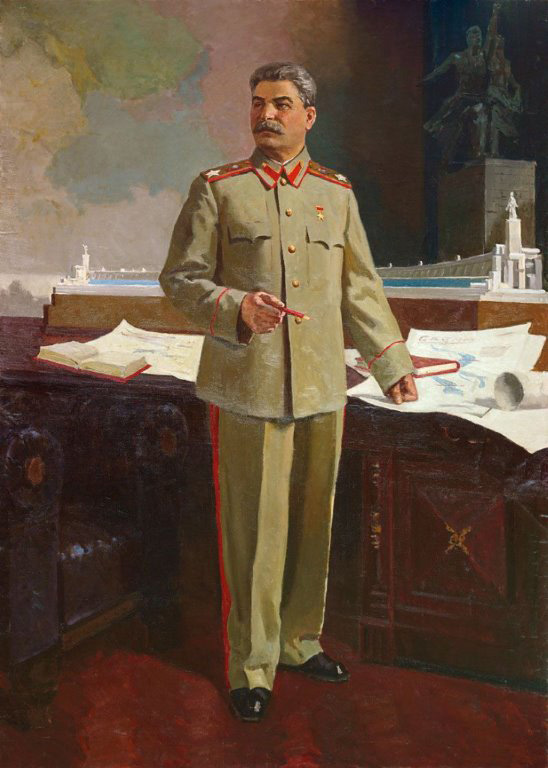
Russian Paintings Still Hitting Highs
May 31, 2015 – Joseph Stalin created Socialist Realism by decree in 1932 to glorify communism through art. Now Vladimir Putin’s capitalists can’t get enough of it.
Demand for painters once hailed by the Soviet dictator as “engineers of the soul” has never been higher, in part driven by a resurgence of patriotism and pangs of nostalgia in Russia, which is locked in the tensest geopolitical confrontation since the Cold War over the conflict in Ukraine.
Transport tycoon Andrey Filatov, who’s amassed one of the largest hoards in the style, says works of Soviet revolutionary romanticism are offering far greater returns than those of masters such as Pablo Picasso and Paul Gauguin. Filatov, 43, says some of his investments have doubled in a year, lifting the value of his collection to as much as half a billion dollars.
Sales at the twice-yearly auctions of Russian art in London, which attract mainly Russian bidders, are at the highest since 2008. That year, an avant-garde piece by Kazimir Malevich went for $60 million at a Sotheby’s sale in New York, a record price for a Russian work of art.
read more
Christie’s, Sotheby’s and specialist auctioneer MacDougalls, which together sold 95 million pounds ($146 million) of Russian works last year, kick off the next round Monday, starting at Christie’s.
Records are falling across the art world as the richest investors keep getting richer. The top 400 billionaires have added about $275 billion in wealth this year to May 27, boosting their worth to $4.3 trillion, according to the Bloomberg Billionaires Index. The 20 richest Russians have fared even better, gaining about 15 percent to $210 billion.
A Picasso fetched $179.4 million from an unidentified bidder on May 11, the most ever for a painting at auction. A Gauguin reportedly changed hands for a record $300 million in a private sale three months earlier.
With 19th and early 20th century Russian works harder to find, more rich Russians are turning to Socialist Realism for reasons that aren’t only commercial, according to Christina Krasnyanskaya, owner of Moscow’s Heritage gallery, which specializes in Soviet art and design.
Soviet ‘Nostalgia’
“Soviet art was forgotten for many years,” Krasnyanskaya said. “The trend is now going toward this Soviet theme because of nostalgia.”
While no known example of Socialist Realism has ever sold for more than $5 million, the market has great “prospects” over the next decade or two, said Yury Tyukhtin, owner of the Sovcom auction house in Moscow.
At least one American collector, Ray Johnson, was ahead of the curve. In 1989, two years before the Cold War ended with the demise of the Soviet Union, Johnson sent a team of historians and advisers to Moscow in search of Soviet masterpieces. He now owns the largest private collection of Socialist Realism outside of the former Soviet Union, at a museum in Minneapolis, according to its website.
Filatov, who’s worth at least $500 million, not including his collection, according to the Bloomberg Billionaires Index, said he plans to open a museum of his own in London or another major city abroad to raise awareness of unsung Russian masters.
Exalted Proletariat
The investor owns stakes in rail freighter Globaltrans Investment Plc, port operator Global Ports Investments Plc and heads Russia’s Chess Federation, another of his hobbies.
His eye for art that exalts the proletariat may be second only to that of banker Alexey Ananiev, who opened his own museum in Moscow in 2011 to house about 500 of his acquisitions.
“These are masterpieces of world art and not just banknotes that are printed every day,” said Russian billionaire Farkhad Akhmedov, who owns about 150 works of Socialist Realism and last month paid $46.5 million for an Abstract Expressionist painting by Mark Rothko. “They depict the Soviet era I grew up in, which will never be repeated.”
Stalinist art is a world away from the avant-garde period before the 1917 Bolshevik Revolution that produced some of Russia’s most-acclaimed painters, including Malevich, Mikhail Larionov and Natalia Goncharova.
Its main pioneer — and now top-selling artist — was Aleksandr Deyneka, whose depictions of muscular female and male athletes embodied the dynamic Soviet ideal. Yuri Pimenov, another artist from the period, is known for his “man in the city” themes portraying “happy and polite” Muscovites, according to the Tretyakov Gallery in the Russian capital.
‘Very Cheap’
In the early 1990s, paintings by Deyneka or Pimenov could be had for $5,000 to $50,000 and those of post-Stalinist artists for $1,000 to $10,000, said Sovcom’s Tyukhtin. Prices started to surge during the oil-fueled economic boom that accompanied Putin’s rise to power in 2000 and now many of these paintings can go for several million dollars apiece, he said.
Even those prices “look very cheap,” compared to other world names, said Catherine MacDougall, director of MacDougall’s auction house.
Deyneka and Pimenov in particular are incredibly hard to find in private hands, meaning the search is on for other acquisition targets, according to Sarah Mansfield, head of Russian art at Christie’s.
‘Junk’ Art
Viktor Popkov, who painted in the so-called Severe style that emerged after Stalin’s death in 1953, is increasingly appearing at auction, Mansfield said. A piece from the Severe period by Georgy Nissky broke a record for postwar Soviet art when it sold for 1.76 million pounds last June, more than double the presale estimate.
But what sets Socialist Realism apart from other Russian styles is the “element of unpredictability,” said Frances Asquith, head of Russian paintings at Sotheby’s
“The image that really appeals to you will often appeal to a broad range of collectors,” Asquith said. “That’s what drives up any price at auction.”
That’s not a position everyone is buying.
James Butterwick, a London-based dealer specializing in Russia, called Socialist Realism “junk” that no serious collector from any country would touch “with a barge pole.”
Russia’s best contribution to art remains the avant-garde painters, who were “complete revolutionary heroes,” said Ivor Braka, a London-based dealer who trades mainly in Impressionist and modern European artists.
“Still, who knows what people are prepared to buy?” Braka said. “I’m not saying Socialist Realism art might not start getting absolutely epic amounts of money.” -Bloomberg News
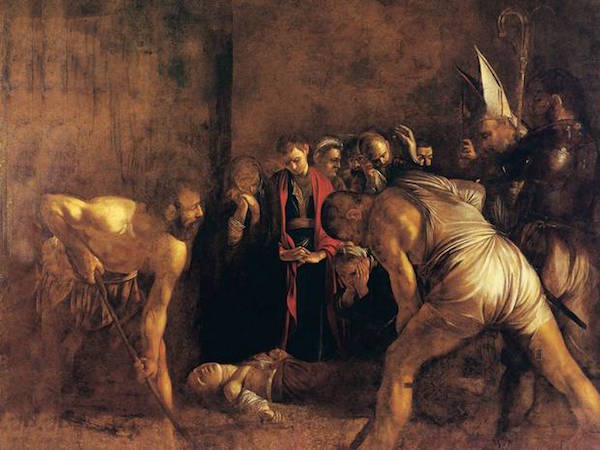
That’s my Caravaggio!
June 4, 2015 – The tenth commandment, “Thou shalt not covet,” hasn’t stopped two churches in the Sicilian port of Syracuse from engaging in a fierce ownership battle over a Caravaggio masterpiece, the Independent reports. (See Sotheby’s Wins Case Over $15.8 Million Caravaggio). The baroque artist’s masterpiece The Burial of Saint Lucy (1608) was originally exhibited in the Basilica of Santa Lucia al Sepolcro in the Borgata district. When the church underwent extensive restoration the work was transferred to the Santa Lucia alla Badia church on the island of Ortigia.
read more
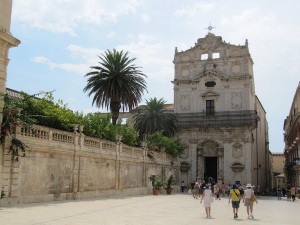 Since being transferred the artwork has become a tourist magnet. Its estimated that the Caravaggio attracts over 3,000 visitors a day to the Santa Lucia all Badia church, which has led to the revitalization of the entire district. (See Canaletto, Caravaggio Fail to Sell at Christie’s Worst Old Masters Sale Since 2002).
Since being transferred the artwork has become a tourist magnet. Its estimated that the Caravaggio attracts over 3,000 visitors a day to the Santa Lucia all Badia church, which has led to the revitalization of the entire district. (See Canaletto, Caravaggio Fail to Sell at Christie’s Worst Old Masters Sale Since 2002).Now the Basilica of Santa Lucia al Sepolcro wants the painting back. And the dispute has pitted the two rival neighborhoods against each other.
Eyeing the surge in visitor numbers to the adjacent Ortigia district, Luigi Puzzo, president of the Association of the Faithful of Santa Lucia al Sepolcro, explained that the painting was removed from the church in 2010 when the structure had to undergo urgent restoration, and that the time has come for the painting to return “to its natural home.”
The former regional councillor for culture Maria Rita Sgarlata has started a petition, collecting over two thousand signatures calling for the painting to return to the Basilica. She also notes that the placement of the artwork obscures another painting in the church hanging nearby.
The National Directive of Italian Guides also waded into the debate. The organization insists that the artwork would be “isolated” in the Basilica, and supports Santa Lucia all Badia’s claim to the painting.
The final decision ultimately rests with the Regional Restoration Centre of Palermo. Tests conducted by art conservation experts in the Sicilian capital revealed that, though not ideal, the atmospheric conditions in the Santa Lucia alla Badia are better, and that the painting must remain there.
The work’s condition is already compromised following a botched restoration in 1979.
-Artnet News
